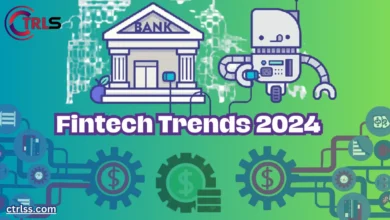Successful Fintech Partnerships: Key Strategies and Examples
Successful Fintech Partnerships.
In today’s rapidly evolving financial landscape, Fintech Partnerships, or fintech partnership have become a cornerstone of innovation and growth. These collaborations between financial technology firms and traditional financial institutions are reshaping how businesses operate, offering new solutions that are more efficient, accessible, and customer-centric. As the demand for digital financial services grows, the strategic importance of successful Fintech Partnerships cannot be overstated.

To thrive in this competitive environment, companies must understand the key elements that make these partnerships work. From aligning goals to navigating regulatory challenges, a well-executed Fintech Partnership can unlock new opportunities and drive significant value for all parties involved. In this article, we will explore the strategies that lead to successful collaborations and provide examples of partnerships that have made a lasting impact on the industry.
What Are Fintech Partnerships?
Fintech Partnerships are strategic collaborations between financial technology companies and traditional financial institutions, designed to combine strengths and innovate within the financial sector. Here’s what they involve:
- Innovation Synergy: Fintech firms bring cutting-edge technology, while traditional institutions offer deep industry experience, creating a powerful synergy for innovation.
- Enhanced Customer Experience: These partnerships aim to improve customer experiences by providing more accessible, efficient, and user-friendly financial services.
- Market Expansion: By joining forces, both parties can reach new markets and demographics, expanding their customer base and increasing profitability.
- Cost Efficiency: Fintech Partnerships help reduce operational costs through the automation and digitalization of financial services, making processes more streamlined and cost-effective.
- Regulatory Compliance: Traditional institutions often provide the regulatory expertise needed to navigate complex financial regulations, ensuring compliance and risk management.
Fintech Partnerships are reshaping the future of finance, making it crucial for companies to understand their dynamics for sustainable growth and innovation in the industry.
Why Are Banks Partnering With FinTechs?
Banks are increasingly partnering with FinTechs to stay competitive in a digital-first world, leveraging the strengths of these tech-driven companies to innovate and enhance their offerings. Here’s why these partnerships are happening:
- Accelerated Innovation: FinTechs bring agility and cutting-edge technology, enabling banks to innovate faster than they could on their own.
- Improved Customer Experience: Banks partner with FinTechs to offer seamless, user-friendly digital experiences that meet the growing expectations of tech-savvy customers.
- Access to New Technologies: Collaborating with FinTechs gives banks access to advanced technologies like AI, blockchain, and big data analytics, which are critical for future growth.
- Expanded Services: These partnerships allow banks to broaden their service offerings, providing customers with innovative products such as mobile payments, digital wallets, and robo-advisors.
- Cost Reduction: By partnering with FinTechs, banks can reduce costs through automation and digital solutions, optimizing their operations and increasing efficiency.
The partnership between banks and FinTechs is not just a trend but a strategic necessity, driving transformation and ensuring both parties remain competitive in the rapidly evolving financial industry.
Who Are Fintech Partners?
Fintech Partners are key players in the financial technology ecosystem, typically comprising tech-driven companies that collaborate with traditional financial institutions. These partnerships focus on innovating and streamlining financial services.
These partners often include software developers, data analysts, and digital payment providers who bring specialized expertise to the table. Their role is crucial in creating user-friendly, efficient, and secure financial solutions that meet modern consumer demands.
By working together, Fintech Partners and traditional banks or financial entities can leverage each other’s strengths. This collaboration results in enhanced product offerings, expanded market reach, and improved operational efficiency for both parties.
How many banks partner with fintechs?
The number of banks partnering with FinTechs has surged in recent years, driven by the need to stay competitive and meet customer demands for digital services. Here’s a look at how many banks are joining forces with FinTechs:

- Global Reach: As of 2024, over 70% of the top 100 global banks have established partnerships with FinTech companies to enhance their digital offerings and innovate.
- U.S. Market: In the United States, approximately 90% of the leading banks have partnered with FinTechs, reflecting the rapid adoption of digital financial solutions across the country.
- European Banks: Nearly 80% of major European banks are engaged in FinTech partnerships, driven by the region’s focus on financial innovation and regulatory compliance.
The trend of banks partnering with FinTechs is expected to continue growing, as financial institutions recognize the value of these collaborations in driving digital transformation and staying ahead in a competitive market.
What Is The Role Of Fintech In Banking?
Fintech plays a crucial role in modern banking by driving innovation and digital transformation. It introduces cutting-edge technologies like AI, blockchain, and mobile apps, making banking more efficient and accessible.
Through fintech, banks can offer enhanced customer experiences, such as seamless digital payments and personalized financial services. This not only improves customer satisfaction but also attracts a tech-savvy audience seeking convenience.
Fintech also helps banks reduce operational costs by automating processes and improving data management. This efficiency allows banks to focus on core activities while offering competitive, technology-driven services.
What Is Difference Between Bank And Fintech?
Understanding the differences between banks and fintech companies is essential for navigating today’s financial landscape. While both play crucial roles in financial services, they operate under distinct models and approaches. This comparison table highlights key aspects that set traditional banks apart from innovative fintech firms.
| Aspect | Bank | Fintech |
|---|---|---|
| Business Model | Traditional financial services focused on lending, deposits, and investment management. | Technology-driven, focusing on innovation in financial services such as mobile payments and digital wallets. |
| Regulation | Heavily regulated by government and central banks with strict compliance requirements. | Subject to emerging regulations, often more flexible but with growing oversight. |
| Technology | Relies on legacy systems with gradual adoption of new technologies. | Built on modern, agile technology platforms that enable rapid innovation. |
| Customer Experience | More formal, with a focus on in-person services and traditional banking relationships. | User-friendly, digital-first experiences with a focus on convenience and personalization. |
| Market Focus | Serves a broad range of customers, including individuals, businesses, and governments. | Often targets niche markets or specific customer needs, like peer-to-peer lending or online payments. |
The table illustrates how banks and fintechs differ in their business models, regulation, and technology use. Banks focus on traditional financial services with extensive regulation, while fintechs leverage modern technology for enhanced customer experiences. This distinction helps users choose the best financial solutions for their needs.
Key Strategies for Successful Fintech Partnerships.
Successful Fintech Partnerships hinge on strategic approaches that maximize benefits for both parties. Implementing these key strategies ensures a fruitful and lasting collaboration:
- Clear Objective Alignment: Both parties should establish and agree on shared goals to ensure that the partnership drives mutual benefits and addresses specific business needs.
- Open Communication: Maintaining transparent and regular communication helps in resolving issues quickly, sharing updates, and fostering a strong working relationship.
- Technology Integration: Seamlessly integrating technologies between fintech and traditional institutions is crucial for delivering cohesive and efficient services to end-users.
- Compliance and Risk Management: Both partners must understand and address regulatory requirements and potential risks to ensure compliance and protect against unforeseen challenges.
- Continuous Evaluation: Regularly assessing the performance and outcomes of the partnership allows for adjustments and improvements, ensuring long-term success and relevance.
By focusing on these strategies, fintech partnership can achieve greater innovation and efficiency, providing enhanced value and growth opportunities for both partners in a competitive market.
Examples of Successful Fintech Partnerships.
Exploring successful fintech partnerships reveals how innovative collaborations are shaping the future of finance. These alliances bring together traditional institutions and technology-driven companies to enhance financial services. Below is a table showcasing some notable examples and their impact on the industry.
| Partnership | Description | Impact |
|---|---|---|
| Visa and Plaid | Visa partnered with Plaid to enhance payment processing capabilities and integrate Plaid’s API with Visa’s network for seamless financial data access. | Enabled faster, more secure transactions and expanded access to financial data, improving user experience and operational efficiency. |
| Goldman Sachs and Apple | Goldman Sachs collaborated with Apple to launch the Apple Card, a credit card integrated with Apple’s ecosystem and offering enhanced digital features. | Revolutionized credit card usage with seamless digital integration, offering users rewards, transparency, and superior control over their spending. |
| Mastercard and Marqeta | Mastercard partnered with Marqeta to utilize Marqeta’s modern card issuing platform, enabling faster deployment of innovative card products and services. | Accelerated the introduction of new card features, improved scalability, and provided a more flexible infrastructure for card issuance and management. |
| Square and Cash App | Square’s acquisition of Cash App enabled the integration of mobile payment and investment features, expanding Square’s reach into consumer finance. | Enhanced financial inclusion with mobile payment and investment options, offering users a comprehensive suite of financial tools within a single platform. |
The table highlights key fintech partnerships that have transformed the financial sector. Each example demonstrates how combining technology with traditional banking enhances efficiency, customer experience, and service innovation. These partnerships illustrate the significant benefits of integrating fintech solutions into established financial systems.
What Are The Risks Of Fintech Partnership?
While fintech partnerships offer significant benefits, they also come with inherent risks that must be carefully managed. Understanding these risks is crucial for ensuring a successful collaboration:
- Regulatory Compliance: Fintech partnerships can face complex regulatory challenges, as both partners must adhere to different sets of regulations, which can lead to compliance issues and legal risks.
- Data Security: Sharing sensitive financial data between partners increases the risk of data breaches and cyber-attacks, necessitating robust security measures to protect against potential threats.
- Integration Challenges: Technical difficulties in integrating fintech solutions with existing banking systems can lead to operational inefficiencies and disrupt service delivery.
- Reputational Risk: Any issues or failures in the fintech partnership can impact the reputation of both parties, potentially eroding customer trust and confidence.
- Dependency Risks: Relying heavily on a fintech partner for critical services can create dependency risks, where the failure of the partner’s technology or operations affects the bank’s performance.
Addressing these risks through careful planning, rigorous security protocols, and clear contractual agreements is essential for the success and sustainability of fintech partnership.
What Is The Biggest Challenge In Fintech?
One of the biggest challenges in fintech is ensuring robust data security. As fintech companies handle sensitive financial information, they must constantly protect against cyber threats and data breaches, which requires advanced security measures and regular updates.
Another major challenge is navigating the complex regulatory landscape. Fintech firms must comply with various financial regulations and standards, which can vary by region and frequently change, adding complexity to their operations and innovation efforts.
Additionally, fintech companies often struggle with scaling their solutions effectively. Rapid growth can strain resources, and integrating new technologies while maintaining service quality and reliability presents a significant operational challenge.
The Future of Fintech Partnerships.
The future of fintech partnerships is poised to transform the financial landscape, with collaboration becoming more critical as technology evolves. These key trends will likely shape the future of these partnerships:
- Increased Collaboration: Traditional banks and fintech companies will continue to deepen their partnerships, combining their strengths to offer more innovative and comprehensive financial solutions.
- Expansion into Emerging Markets: Fintech partnerships will increasingly target emerging markets, where there is significant potential for growth in financial inclusion and access to digital banking services.
- Focus on AI and Automation: The integration of artificial intelligence and automation into fintech solutions will drive efficiency, personalized services, and real-time data analytics, enhancing the value of partnerships.
- Sustainability and ESG Initiatives: Fintech partnerships will increasingly focus on sustainability and Environmental, Social, and Governance (ESG) initiatives, aligning with global trends towards responsible and ethical business practices.
- Regulatory Harmonization: As fintech partnerships expand globally, there will be a push towards harmonizing regulations across different regions, making it easier to operate and innovate on a global scale.
The evolution of fintech partnership will continue to reshape the financial industry, offering new opportunities for innovation and growth. Staying ahead of these trends will be crucial for organizations looking to thrive in this dynamic environment.
What Is The Future Of Fintech 2025?
As we approach 2025, the future of fintech is set to bring about significant transformations in the financial industry. Here are key developments expected in the fintech landscape by 2025:
- Widespread Adoption of AI: Artificial Intelligence will become integral to fintech, driving personalized financial services, advanced analytics, and automated customer support across platforms.
- Rise of Decentralized Finance (DeFi): DeFi platforms will gain more traction, offering decentralized financial services that challenge traditional banking models and provide more autonomy to users.
- Enhanced Cybersecurity Measures: As cyber threats evolve, fintech companies will invest heavily in advanced cybersecurity technologies, ensuring robust protection of sensitive financial data.
- Global Financial Inclusion: Fintech will play a crucial role in expanding financial services to underserved populations worldwide, especially in developing regions, through mobile banking and digital wallets.
- Regulatory Innovation: Governments and regulators will increasingly embrace fintech, creating more flexible and supportive regulatory environments to foster innovation and growth in the sector.
The fintech landscape in 2025 will be characterized by rapid innovation, with a strong focus on technology, security, and global inclusivity. Staying ahead of these trends will be essential for businesses and consumers alike.
What is The Future Of Fintech According To AI?
The future of fintech, as envisioned by AI, revolves around the integration of advanced machine learning and predictive analytics. AI will enable financial institutions to offer highly personalized services, tailoring products and experiences to individual customer needs with precision.
AI predicts that automation will dominate routine financial processes, significantly reducing operational costs and errors. This shift will allow fintech companies to focus on innovation, enhancing the speed and efficiency of financial transactions while maintaining accuracy.
Moreover, AI foresees a greater emphasis on data-driven decision-making within fintech. By analyzing vast amounts of data in real-time, AI will help companies identify emerging trends, mitigate risks, and optimize their strategies for long-term growth and stability.
Conclusion
Successful fintech partnerships thrive on synergy between traditional financial institutions and innovative tech firms. By adopting key strategies like regulatory compliance, data security, and effective integration, these collaborations can overcome challenges and create groundbreaking solutions. Learning from successful examples, these partnerships will continue to transform the financial landscape, driving growth and innovation in the industry.
Q&A
Q1: What is a fintech partnership?
A1: A fintech partnership is a collaboration between a traditional financial institution and a fintech company to combine their strengths. This partnership aims to deliver innovative financial services, enhance customer experience, and improve operational efficiency.
Q2: Why are fintech partnerships important for the future of finance?
A2: Fintech partnerships are essential because they enable financial institutions to leverage advanced technology, like AI and automation, to stay competitive. These collaborations help in developing new products, expanding into emerging markets, and addressing challenges such as regulatory compliance and data security.
Q3: What are some key strategies for successful fintech partnerships?
A3: Key strategies for successful fintech partnerships include ensuring regulatory compliance, prioritizing data security, effectively integrating technology with existing systems, and focusing on sustainability and ESG initiatives. These strategies help in managing risks and maximizing the benefits of the partnership.
Q4: Can you give an example of a successful fintech partnership?
A4: One example of a successful fintech partnership is the collaboration between JPMorgan Chase and OnDeck Capital. This partnership enabled JPMorgan to enhance its small business lending platform using OnDeck’s advanced technology, resulting in faster loan processing and improved customer experience.
Q5: What challenges do fintech partnerships face?
A5: Fintech partnerships face several challenges, including regulatory compliance, data security risks, technical integration issues, and reputational risks. Managing these challenges is crucial for ensuring the success and sustainability of the partnership.
Q6: How will fintech partnerships evolve by 2025?
A6: By 2025, fintech partnerships are expected to become more collaborative, with a focus on AI, decentralized finance, and global financial inclusion. These partnerships will likely see increased investment in cybersecurity and a push for regulatory harmonization to support innovation and growth.
Q7: What role does AI play in the future of fintech partnerships?
A7: AI plays a critical role in the future of fintech partnerships by enabling personalized financial services, automating routine processes, and driving data-driven decision-making. AI helps fintech companies and traditional banks to innovate and stay competitive in a rapidly evolving market.



